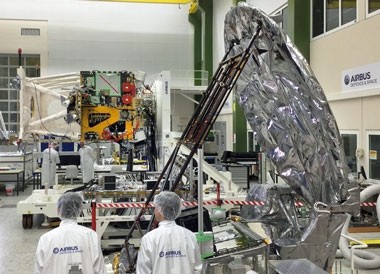Lead Organisation: STFC RAL Space
Project Lead: Peter Huggard
Partners: University of Leicester, University of St. Andrews & Thomas Keating Ltd.
In this 18 month project, a highly experienced national team will be building and demonstrating a 200 GHz, 1.5 mm wavelength, cloud profiling radar, establishing the basis for the future operation of a similar Earth observing radar in space. The radar is called GRaCE: G-band Radar for Cloud Evaluation. The small wavelength of a 200 GHz space radar will provide enhanced global information on the distribution of small droplets in the atmosphere. When operated in tandem with existing lower frequency space radars, the dual wavelength observations will enable atmospheric scientists to better characterize the microphysical properties of hydrometeors in water and ice clouds. Such information is needed to improve the accuracy of societally important numerical weather prediction models.

The team led by STFC RAL Space with Thomas Keating Ltd, and the Universities of Leicester and St Andrews will design, build and field test the GRaCE ground-based demonstrator radar. The programme exploits the complementary strengths of the partners so that the radar delivers the most useful scientific information: Thomas Keating Ltd. will develop their existing space radar antenna networks for higher frequencies, RAL Space will adapt space Schottky technology to provide the necessary high transmitted powers and sensitive receivers, the University of St Andrews will bring their millimetre wave radar system development expertise to the system design, test and calibration, and the University of Leicester will contribute expertise in analysing radar data and atmospheric modelling. Previous CEOI funding of the Leicester and RAL Space partners, under the POLYDOROS and HIDRA4PPM grants, has contributed to the technical and scientific foundations for the 200 GHz radar.
